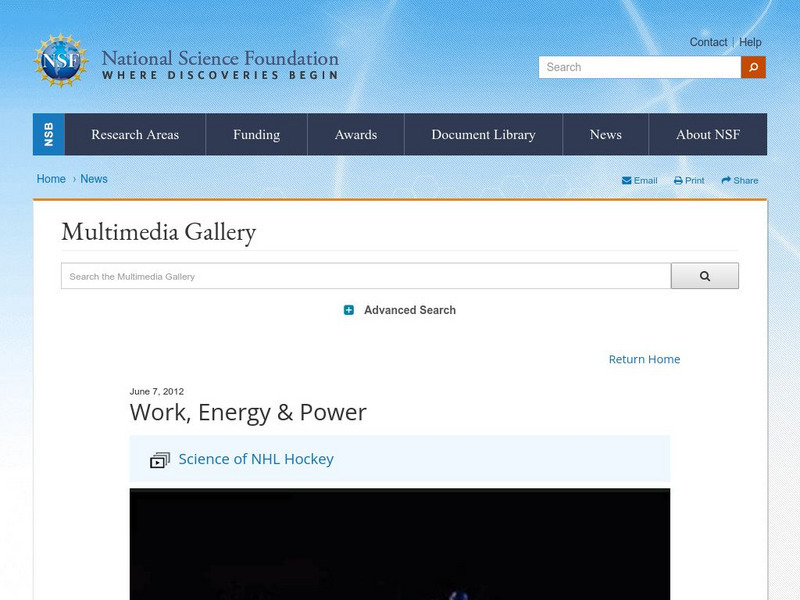National Science Foundation
National Science Foundation: Science of Nhl Hockey: Vectors
Explains why passing the puck in ice hockey is such an important skill. The puck is an example of a velocity vector and vectors can be added to determine the direction and speed of the puck. [4:28]
National Science Foundation
National Science Foundation: Science of Nhl Hockey: Work, Energy & Power
In order to generate a 100 mile-per-hour (160 kph) slapper, NHL players depend on three important physics concepts: work, energy and power. [5:15]
National Science Foundation
National Science Foundation: Science of Nhl Hockey: Reflexes & Reaction Time
An NHL goalie relies on his brain even more than his equipment in order to stop a puck with split-second timing. How a goalie does that is described in this video. [5:26]
National Science Foundation
National Science Foundation: Science of Nhl Hockey: Newton's Three Laws of Motion
Scientists explain how Newton's Three Laws of Motion manifest themselves in a game of hockey. [5:32]
National Science Foundation
National Science Foundation: Science of Nhl Hockey: Force, Impulse & Collisions
The movement of a puck in an NHL hockey game must follow the rules of physics, which involve the concepts of force, impulse and collisions. [5:05]
National Science Foundation
National Science Foundation: Science of the Winter Olympics: Slapshot Physics
One of the most popular team sports in the Winter Olympics is hockey. More than just a physical game, for scientists, it's a showcase for physics on ice - especially when it comes to the slapshot. An Olympian and two scientists break...



